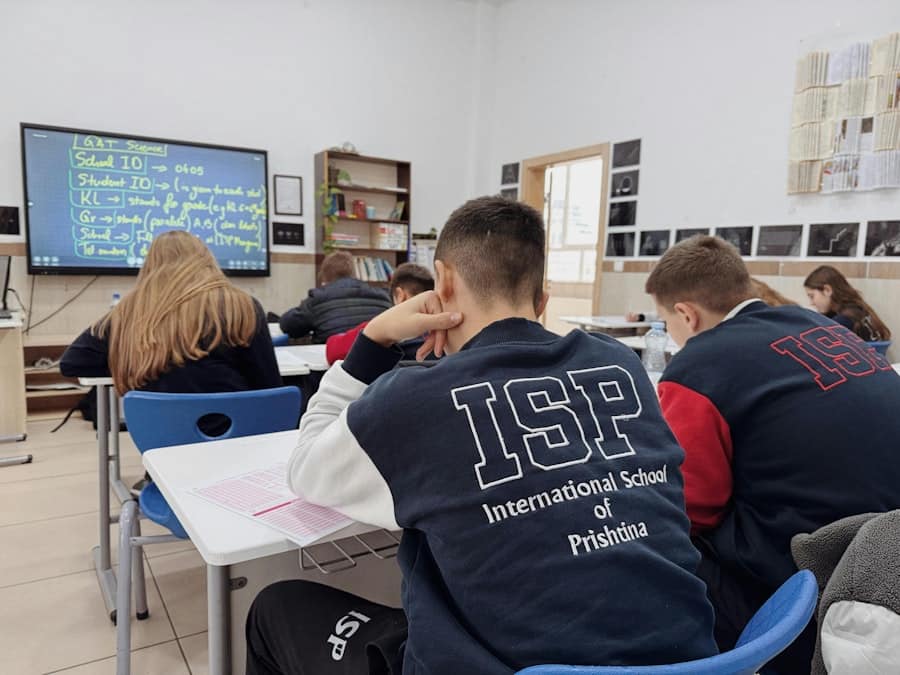Adaptive learning paths represent a transformative approach to education, leveraging technology to tailor the learning experience to individual student needs. This method recognizes that learners come with diverse backgrounds, skills, and paces of learning, necessitating a more personalized approach than traditional one-size-fits-all educational models.
The concept of adaptive learning is not entirely new; however, the integration of advanced technologies has significantly enhanced its effectiveness. With the advent of artificial intelligence (AI) and machine learning, educational platforms can now analyze vast amounts of data to identify patterns in student behavior and performance. This allows for the creation of dynamic learning environments where instructional materials are continuously updated based on individual progress.
As a result, students are not only engaged but also empowered to take ownership of their learning journey, making education a more interactive and responsive experience.
Key Takeaways
- Adaptive learning paths use AI to personalize learning experiences for students
- AI plays a crucial role in analyzing student data and providing personalized recommendations
- Personalized learning experiences cater to individual student needs and learning styles
- AI-powered adaptive learning paths benefit students by improving engagement and retention
- Challenges of AI in adaptive learning include data privacy concerns and the need for teacher training
The Role of AI in Adaptive Learning
Enhancing Personalization
At its core, AI enables the analysis of complex datasets that reflect student interactions with educational content. By employing algorithms that can process this information, AI systems can identify strengths and weaknesses in a learner’s understanding, allowing for the customization of educational materials.
Scalability and Accessibility
Traditional methods of personalized instruction often require significant human resources, making them difficult to implement on a large scale. However, AI-driven platforms can serve thousands of students simultaneously, adjusting their learning paths without the need for constant human intervention.
Empowering Educators
This capability not only makes personalized education more accessible but also allows educators to focus on higher-level teaching tasks, such as fostering critical thinking and creativity among students.
Personalized Learning Experiences
Personalized learning experiences are at the heart of adaptive learning paths. These experiences are designed to meet the unique needs of each learner, taking into account their prior knowledge, interests, and preferred learning modalities. For example, a student who excels in visual learning may benefit from video tutorials and infographics, while another who prefers auditory input might find success through podcasts or interactive discussions.
By offering a variety of content formats and pathways, adaptive learning systems cater to diverse learner profiles. Furthermore, personalized learning experiences foster greater engagement and motivation among students. When learners see that their individual needs are being addressed, they are more likely to take an active role in their education.
This engagement is crucial for retention and mastery of concepts. For instance, platforms like Khan Academy utilize adaptive algorithms to present challenges that are neither too easy nor too difficult for the learner, striking a balance that keeps students motivated and encourages them to persist through challenges.
Benefits of AI-Powered Adaptive Learning Paths
The benefits of AI-powered adaptive learning paths extend beyond mere personalization; they encompass improved educational outcomes and enhanced efficiency in teaching practices. One significant advantage is the ability to provide immediate feedback to students. Traditional assessments often come with delays in grading and feedback, which can hinder a student’s ability to learn from mistakes.
In contrast, AI systems can offer real-time insights into performance, allowing learners to adjust their strategies promptly and reinforcing concepts as needed. Additionally, these adaptive systems can help educators identify trends and areas for improvement within their classrooms. By analyzing aggregate data from student interactions, teachers can gain insights into common misconceptions or knowledge gaps across their student population.
This information can inform instructional strategies and curriculum design, enabling educators to address widespread issues more effectively. For example, if a significant number of students struggle with a specific topic in science, teachers can modify their lesson plans to revisit that content with different approaches or additional resources.
Challenges and Limitations of AI in Adaptive Learning
Despite the numerous advantages of AI in adaptive learning, several challenges and limitations must be addressed for these systems to reach their full potential. One primary concern is data privacy and security. The collection and analysis of student data raise ethical questions regarding consent and the protection of sensitive information.
Educational institutions must navigate these complexities carefully to ensure compliance with regulations such as FERPA (Family Educational Rights and Privacy Act) while still leveraging data to enhance learning experiences. Another challenge lies in the potential for algorithmic bias. AI systems are only as good as the data they are trained on; if this data reflects existing biases or inequities in education, the resulting adaptive learning paths may inadvertently perpetuate these issues.
For instance, if an AI system is trained predominantly on data from high-performing schools, it may not adequately support students from under-resourced backgrounds who face different challenges. Continuous monitoring and refinement of algorithms are essential to mitigate these risks and ensure equitable access to personalized learning opportunities.
Implementing AI-Powered Adaptive Learning in Education
The successful implementation of AI-powered adaptive learning requires careful planning and collaboration among various stakeholders in the educational ecosystem. Schools and institutions must invest in robust technological infrastructure that supports these advanced systems while also providing training for educators on how to effectively integrate them into their teaching practices. Professional development programs should focus on equipping teachers with the skills necessary to interpret data insights and adapt their instructional strategies accordingly.
Moreover, collaboration between technology developers and educators is crucial for creating effective adaptive learning tools. Developers must engage with teachers to understand their needs and challenges in the classroom context. This partnership can lead to the design of user-friendly platforms that align with pedagogical goals while also being responsive to student needs.
For example, platforms like DreamBox Learning have successfully collaborated with educators to create math programs that adapt in real-time based on student performance while providing teachers with actionable insights.
The Future of AI in Adaptive Learning
Looking ahead, the future of AI in adaptive learning holds immense promise as technology continues to evolve. One potential development is the integration of more sophisticated natural language processing capabilities into adaptive systems. This advancement could enable AI platforms to engage in more meaningful dialogues with students, providing personalized support through conversational interfaces.
Imagine a scenario where a student struggling with writing receives real-time feedback on their essays through an AI tutor that understands context and nuance. Additionally, advancements in virtual reality (VR) and augmented reality (AR) could further enhance adaptive learning experiences by immersing students in interactive environments tailored to their individual learning paths. For instance, a history lesson could be transformed into an immersive experience where students explore ancient civilizations through VR simulations that adapt based on their interests and prior knowledge.
Such innovations could revolutionize how students engage with content, making learning more dynamic and impactful.
The Impact of AI on Student Success
The integration of AI into adaptive learning paths has the potential to significantly impact student success by creating more personalized, engaging, and effective educational experiences. As technology continues to advance, it is essential for educators, policymakers, and technology developers to work collaboratively to harness these innovations responsibly and ethically. By addressing challenges such as data privacy and algorithmic bias while focusing on equitable access to personalized learning opportunities, we can ensure that all students benefit from the transformative power of AI in education.
In this rapidly changing landscape, it is crucial to remain vigilant about the implications of these technologies on teaching and learning practices. The ultimate goal should be to create an educational environment where every learner has the opportunity to succeed based on their unique strengths and needs. As we move forward into this new era of education powered by AI, we must remain committed to fostering an inclusive and supportive atmosphere that prioritizes student growth and achievement above all else.
If you’re interested in the latest technology trends in education, you may also want to check out Experience the Power of Samsung Galaxy Tab S8: The Ultimate Tablet. This article explores how the Samsung Galaxy Tab S8 is revolutionizing the way students learn and interact with technology in the classroom. With its powerful features and sleek design, this tablet is a game-changer for adaptive learning paths and personalized education experiences.
FAQs
What is adaptive learning?
Adaptive learning is a method of education that uses technology and data to customize learning paths for individual students based on their strengths, weaknesses, and learning styles.
How is AI used in adaptive learning?
AI is used in adaptive learning to analyze large amounts of data on student performance and behavior, and then to create personalized learning paths and recommendations for each student.
What are the benefits of using AI for adaptive learning?
Using AI for adaptive learning allows for more personalized and effective learning experiences for students, as well as more efficient use of teachers’ time and resources.
How does AI determine the best learning path for a student?
AI determines the best learning path for a student by analyzing data on their past performance, behavior, and preferences, and then using algorithms to predict the most effective next steps for their learning.
Are there any potential drawbacks to using AI for adaptive learning?
Some potential drawbacks of using AI for adaptive learning include concerns about data privacy and security, as well as the potential for bias in the algorithms used to make recommendations for students.



